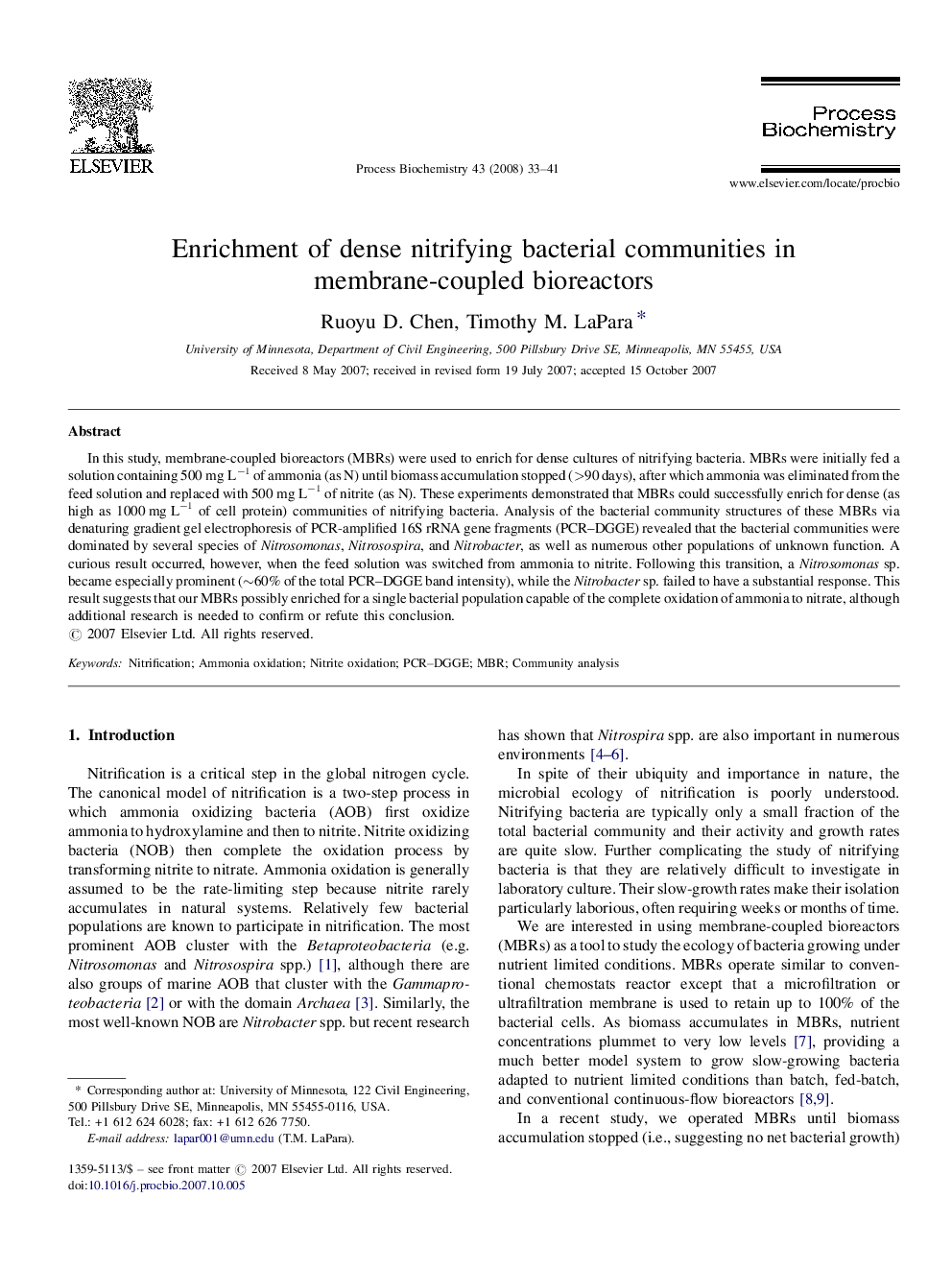| Article ID | Journal | Published Year | Pages | File Type |
|---|---|---|---|---|
| 35913 | Process Biochemistry | 2008 | 9 Pages |
In this study, membrane-coupled bioreactors (MBRs) were used to enrich for dense cultures of nitrifying bacteria. MBRs were initially fed a solution containing 500 mg L−1 of ammonia (as N) until biomass accumulation stopped (>90 days), after which ammonia was eliminated from the feed solution and replaced with 500 mg L−1 of nitrite (as N). These experiments demonstrated that MBRs could successfully enrich for dense (as high as 1000 mg L−1 of cell protein) communities of nitrifying bacteria. Analysis of the bacterial community structures of these MBRs via denaturing gradient gel electrophoresis of PCR-amplified 16S rRNA gene fragments (PCR–DGGE) revealed that the bacterial communities were dominated by several species of Nitrosomonas, Nitrosospira, and Nitrobacter, as well as numerous other populations of unknown function. A curious result occurred, however, when the feed solution was switched from ammonia to nitrite. Following this transition, a Nitrosomonas sp. became especially prominent (∼60% of the total PCR–DGGE band intensity), while the Nitrobacter sp. failed to have a substantial response. This result suggests that our MBRs possibly enriched for a single bacterial population capable of the complete oxidation of ammonia to nitrate, although additional research is needed to confirm or refute this conclusion.
